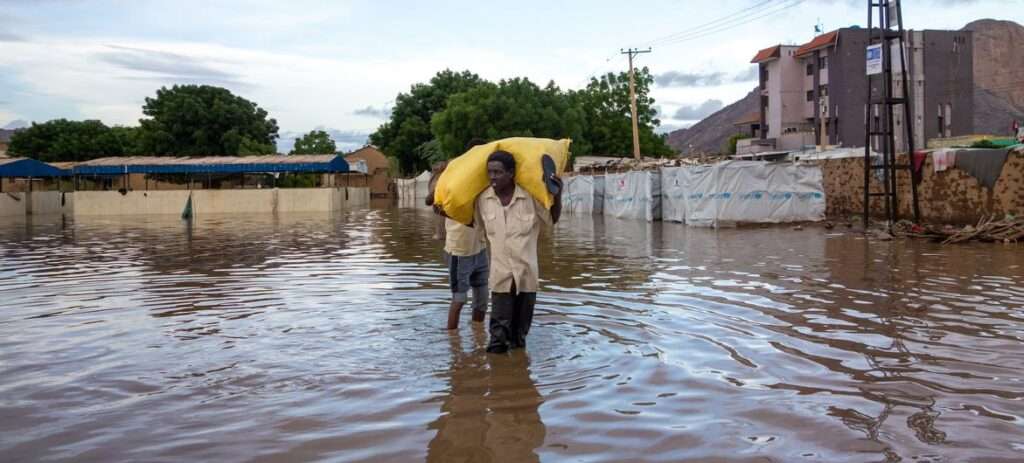In eastern Sudan, the catastrophic collapse of the Arba’at Dam has left a trail of destruction in its wake, exacerbating an already dire humanitarian crisis.
Around 20 villages have reportedly been “destroyed,” and a total of 70 have been impacted, according to reports from the United Nations Office for the Coordination of Humanitarian Affairs (OCHA).
The devastating floods add to the suffering of communities already grappling with the ongoing war between rival military factions.
The Arba’at Dam, which is situated roughly 38 kilometers (24 miles) northwest of Port Sudan, failed on Sunday, sending floodwaters rushing through the region. The resulting deluge has not only obliterated homes but also severely damaged crucial infrastructure, including roads, electricity, and telecommunication networks.
The extent of the destruction is making it difficult for authorities to fully assess the situation, leaving many in desperate need of aid.
Thousands Impacted by Dam Collapse
Local authorities estimate that approximately 50,000 people residing on the western side of the dam have been affected by the floodwaters.

The situation on the eastern banks remains under assessment, with fears that the toll could be even higher. The dam’s collapse has cut off many communities, leaving them stranded without access to basic necessities.
Provincial and federal government teams are currently on the ground, working tirelessly to clear roads and conduct search and rescue operations.
“The government delegation reported that about 70 villages around Arba’at Dam have reportedly been affected by the flash flooding, of which 20 villages have been destroyed,” OCHA confirmed in a statement.
At least 30 fatalities have been confirmed, although there are growing concerns that the actual number of casualties could be significantly higher.
The floodwaters have also caused extensive damage to local infrastructure, including the collapse of 84 borehole wells, which were essential for providing drinking water to the area.

Critical Water Supply Threatened
The Arba’at Dam’s collapse poses a significant threat to the city of Port Sudan, the primary hub for the country’s international trade and a critical center for humanitarian operations since the outbreak of conflict between the Sudanese Armed Forces (SAF) and the Rapid Support Forces (RSF) in April of last year.
The dam had been the city’s main source of freshwater, and its destruction has left the region’s future supply uncertain.
In response to the disaster, an inter-agency team led by OCHA has been deployed to the affected areas. The team is working closely with local authorities and partner organizations to conduct a comprehensive assessment of the damage.
However, the challenging terrain and ongoing flooding are hindering efforts. “A helicopter is urgently required to assist with aerial assessment as some areas are impassable by road due to flooding,” OCHA noted.
The helicopter would also improve search and rescue missions, particularly in areas where residents have sought refuge in the mountains or remain isolated by floodwaters.
Since the start of the rainy season in June, floods have ravaged several regions across Sudan, with the most severe impacts felt in North and West Darfur, as well as the River Nile states.
The ongoing conflict has not only driven people from their homes but also decimated livelihoods and destroyed crops, leading to severe food shortages and famine in multiple regions.
Now, with the added devastation from the flooding, the humanitarian crisis in Sudan continues to worsen, leaving millions in urgent need of help.




















